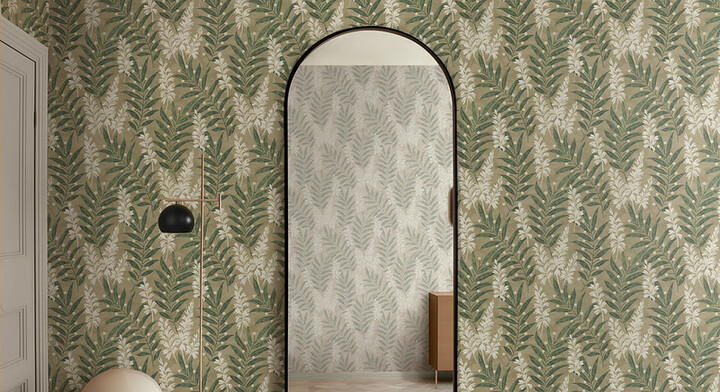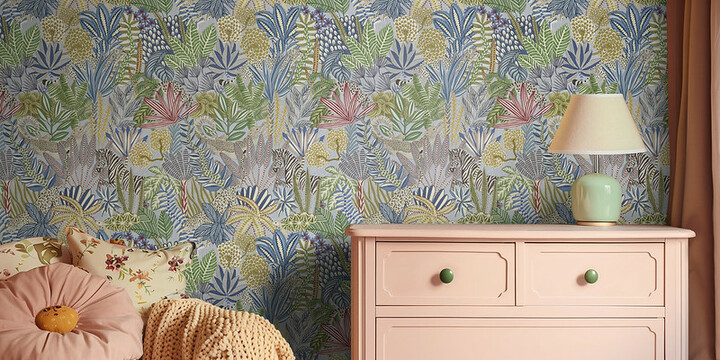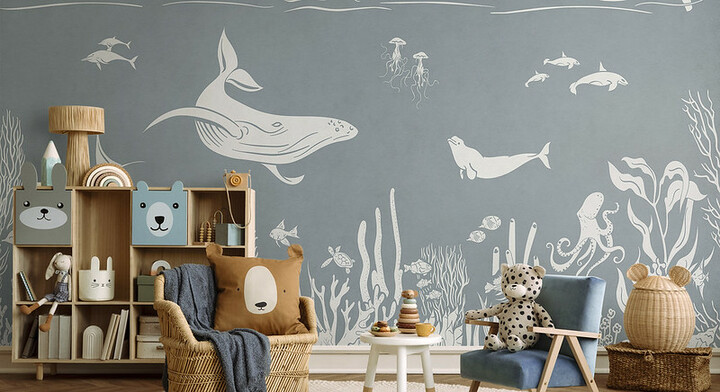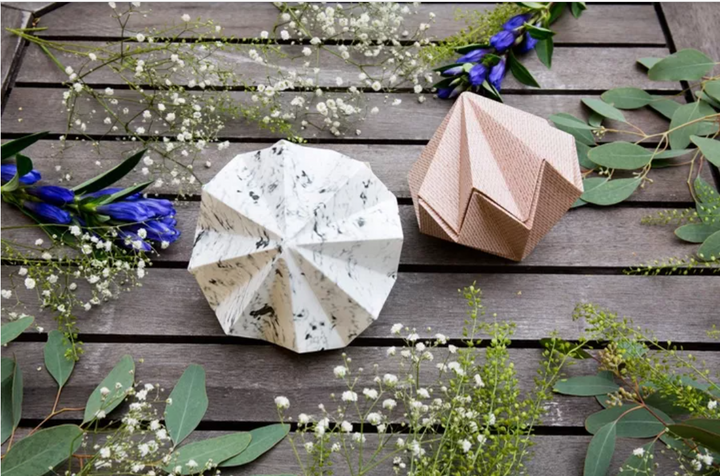
In the age of environmental consciousness, understanding how to choose an eco-friendly wall mural can elevate not just your home decor but also your commitment to the planet. This article delves into the essential aspects of eco-friendly wall murals, from understanding their significance to the various factors you should consider before making your selection. We will also provide insights into materials that align with green living and conclude with innovative ideas for repurposing old or excess wall murals.
What are eco-friendly wall murals?
An eco-friendly wall mural is one that is crafted with both the environment and human health in mind. These murals are made from sustainable materials, manufactured using processes that minimize environmental impact and do not contain harmful chemicals or toxins that can leach into the indoor environment. Opting for an eco-friendly wall mural not only makes a statement about your commitment to the planet but also ensures a safer, healthier indoor space, free from pollutants that traditional murals might release.
Factors to consider when choosing eco-friendly wall murals
When venturing into the realm of eco-friendly wall murals, it's essential to scrutinize a few crucial factors. This section will guide you through these considerations, ensuring your chosen mural aligns perfectly with both aesthetic desires and environmental responsibility. Whether it's the materials used, the manufacturing process, or the company's broader environmental stance, every detail matters in your quest for sustainability.
Is the wall mural PVC-free?
When choosing an environmentally friendly wall mural, first ask if the wall mural is PVC-free. Polyvinyl chloride, commonly known as PVC, is a widely used plastic that, when incorporated into wall murals, can release toxic chemicals over time, posing health risks and environmental concerns. PVC-based murals can off-gas volatile organic compounds (VOCs), which diminish indoor air quality and can lead to various health issues.
Moreover, the production and disposal of PVC often result in the release of harmful dioxins into the environment. By selecting PVC-free wall murals, you prioritize not just the health of your home's occupants but also the well-being of our planet. In alignment with these eco-conscious choices, Photowall’s wall murals are free of PVC and bear the CE label, a guarantee of their control over heavy metals and formaldehyde, making them a safe and green choice for interior decoration.
What inks do they use for the wall mural print?

When selecting a wall mural, it's not just the material of the mural that matters, but also the inks used in the printing process. The inks play a significant role in the overall environmental impact of the product. Traditional inks can contain harmful solvents and chemicals that release volatile organic compounds (VOCs) into the air, compromising indoor air quality and posing health risks. Eco-friendly inks, on the other hand, are typically water-based, free from harmful solvents, and have a reduced carbon footprint.
Photowall recognizes the importance of using sustainable printing solutions. The company utilizes biodegradable, solvent-free printing inks. This choice not only diminishes their ecological impact but also ensures that the murals contribute to healthier indoor air quality, providing a safer environment for occupants.
Do they let you use biodegradable pastes?
Utilizing biodegradable pastes for wall murals is an essential consideration for individuals aiming to reduce their environmental footprint. Traditional adhesives can contain harmful chemicals that, once disposed of, may persist in the environment for extended periods, posing a threat to both the ecosystem and aquatic life. On the other hand, biodegradable pastes decompose naturally over time, reducing landfill waste and decreasing the potential release of harmful toxins into the earth. Adopting such eco-friendly alternatives helps ensure our environment's safety and promotes a healthier living space for inhabitants.
Photowall recognizes this significance; their wall mural glue is conscientiously derived from natural raw materials. Being biodegradable, it substantially curtails its environmental impact, exemplifying its commitment to green practices.
How do they package their products?
When assessing the eco-friendliness of a company's products, it's crucial to consider the packaging process. Packaging contributes significantly to global waste, and its environmental footprint can be substantial, depending on the materials used and the efficiency of the distribution process. Here are some reasons why Photowall is a great choice with regards to this factor:
• Recycled material usage: Photowall's packaging prominently utilizes recycled materials. Their boxes are either made entirely from recycled content or contain a significant portion of it.
• Eco-friendly additives: Unlike many other companies that might use chemical additives in their packaging, Photowall's sole additive is starch, a completely biodegradable substance.
• Reduction in raw material use: Due to their usage of recycled materials and biodegradable additives, Photowall ensures that there's a reduced demand for new raw materials, supporting sustainable resource management.
• Minimizing landfill waste: By utilizing recycled materials and starch in their packaging, Photowall plays a part in reducing the amount of waste that ends up in landfills.
• Efficient transportation: In a bid to reduce carbon emissions, Photowall adopts a strategy where they only transport their products on fully loaded trailers, optimizing transport efficiency and minimizing their carbon footprint.
Check the manufacturing process of the company
When examining a company's commitment to sustainability, the manufacturing process stands out as a pivotal area of interest. The methods employed in producing goods can have extensive environmental implications. From energy consumption to waste production, the efficiency of the manufacturing workflow directly impacts a company's ecological footprint.
Photowall's dedication to sustainability is evident in its manufacturing strategy. Prioritizing efficiency and a minimal waste approach, Photowall adopts a made-to-order production system. This method ensures that only the necessary quantity of a product is produced, thus avoiding surplus inventory and the subsequent waste that could arise. Furthermore, any by-products or waste from their manufacturing activities are responsibly recycled, thanks to their partnership with the eco-conscious entrepreneur Hans Andersson Recycling AB.
Delve into the company's environmental advocacy
Understanding a company's environmental advocacy provides deeper insight into its overall commitment to sustainability. When a business not only focuses on eco-friendly products but also champions broader environmental causes, it highlights its genuine concern for the planet. This can be a key factor for eco-conscious consumers, as it often means that their purchases will have wider-reaching positive impacts beyond just the product itself. Here are some things that show Photowall’s advocacy for the environment:
• Each transaction with Photowall supports its partnership with Vi Agroforestry, a leading Swedish development cooperation organization.
• Photowall and Vi Agroforestry collaboratively plant trees every year around Lake Victoria in East Africa.
• Photowall's supply chain showcases its deep commitment to environmental responsibility.
• They choose to work with suppliers aligned with their sustainability ethos and who uphold high environmental standards.
• Photowall adheres to guidelines for responsible due diligence in their supply chain, aligning with the OECD's responsible business conduct principles.
• Through these practices, Photowall efficiently targets CO2 emission reductions and bolsters the overall sustainability of its products.
Consider Recyclable Materials
Emphasizing recyclable materials in our purchasing decisions is paramount for a sustainable future. When products are made of recyclable materials, it means they can be repurposed at the end of their lifecycle rather than ending up in landfills. This not only helps conserve our planet's limited resources but also reduces the detrimental environmental impacts associated with waste. Opting for products made of recyclable or biodegradable materials is a concrete step towards a circular economy, where products are reused and recycled, minimizing environmental degradation and waste.
Photowall exemplifies this sustainable approach in their offerings. Their premium wall murals feature an added biodegradable layer, ensuring that as the mural reaches its end of life, it can degrade naturally without harming the environment. Additionally, their peel-and-stick wallpapers have been designed to be recyclable. Such conscientious choices underline Photowall's unwavering dedication to sustainability and the well-being of our planet.
Make sure that the wall mural is durable
Durability is intrinsically linked to eco-friendliness. When a product is built to last, it means fewer replacements, less frequent manufacturing, and a reduced need for raw materials. Additionally, durable items help minimize waste, as products that quickly degrade or get damaged often end up in landfills. When consumers choose durable products, they are making a sustainable choice, as they reduce overall consumption and waste production over time. Here are some features of Photowall murals that ensure their durability:
• Their non-woven wall murals are crafted from resilient, non-woven materials.
• Their non-woven wall murals are fire-rated.
• Their non-woven wall murals are specifically designed to resist fading from sunlight exposure.
• Their premium murals are scrape-resistant.
• They have premium types that are suitable for cleaning products.
• Their peel-and-stick murals use top-tier self-adhesive material, ensuring a firm grip without degradation.
These features lead to fewer replacements over time, reducing the need for replacements, which means decreased demand for new products, less resource consumption, and less waste, ultimately promoting an eco-friendly living space.
What wall mural materials to avoid if you prioritize eco-friendly choices
When seeking eco-friendly wall mural choices, it's crucial to know which materials have a negative environmental impact. Avoiding these materials helps reduce harmful environmental footprints.
• Vinyl wall murals: Vinyl is a synthetic material derived from petroleum. Its production releases toxic chemicals and consumes significant energy. Moreover, vinyl is non-biodegradable, meaning it doesn't break down easily and can linger in landfills for years.
• PVC wall murals: PVC (polyvinyl chloride) is another petroleum-derived material similar to vinyl but with added plasticizers. The production and disposal of PVC can release dioxins and other harmful chemicals. Like vinyl, PVC is also non-biodegradable.
• Foil wallpaper: This type involves applying a thin layer of metallic foil to a paper backing. Its production can be environmentally taxing, involving high energy consumption and pollution from mining and refining. Moreover, foil wallpaper is typically neither recyclable nor biodegradable.
What wall mural types to consider if you prioritize eco-friendly choices

To ensure a sustainable and eco-friendly decor, opting for materials with minimal environmental impact is key. Here are some wall mural materials that are known for their eco-friendly properties:
• Non-woven wall murals: Made from a mix of natural and synthetic fibers, non-woven wallpapers are a more environmentally friendly alternative to traditional vinyl wallpapers. More importantly, if you’re using Photowall, they are free from PVC and breathable, aiding in the prevention of mold and mildew.
• Peel-and-stick wall murals: Self-adhesive wallpapers are easy to install and remove, which reduces waste generated during the installation and removal process. They are also more reusable than traditional wall coverings since they can be carefully removed and then used for other crafts after their removal from walls.
• Recycled material wall murals: Made from recycled materials, these murals reduce the need for new raw materials and energy consumption. They help divert waste from landfills and give a second life to discarded items, contributing to a circular economy.
Final tips: Creative ideas to give old or excess wall murals a new life

Revamping your space with eco-friendly wall murals is always exciting, but what do you do with the old ones? Before discarding them, consider these creative ways to repurpose them, ensuring sustainability even in waste management.
• Framed art pieces: Cut out portions of your wall mural that have distinct and attractive designs. Frame these cutouts and hang them as unique art pieces around your home.
• Book covers: Use pieces of your mural to cover notebooks or binders. Not only does this give a personalized touch to your stationary, but it also protects the books.
• Drawer liners: Line the insides of your drawers or shelves with mural pieces. It not only adds an aesthetic appeal but also provides a protective layer against dust and scratches.
• Collage art: Combine multiple mural scraps and materials like magazine clippings or photographs and create a collage art piece. This could be a fun project to do with kids.
• Gift wrapping: Instead of purchasing wrapping paper, use mural remnants to wrap gifts. It’s eco-friendly and adds a personal touch to your presents.
• Lampshade makeover: Stick mural pieces onto an old or plain lampshade for a customized look. Ensure you use a heat-resistant adhesive.
• Bookmark: Create durable bookmarks by cutting the mural into long strips. Punch a hole at the top and attach a ribbon or tassel.
Understanding the importance of sustainable wall murals, from materials to the manufacturing process, can significantly reduce our ecological footprint. By prioritizing PVC-free, durable, and recyclable options while supporting companies with strong environmental advocacies, we not only elevate our interiors but also champion a greener future. Moreover, by innovatively repurposing or recycling old murals, we further emphasize sustainability in every corner of our homes. Making informed choices today ensures a healthier planet for tomorrow.
If you need a more general guide on how to choose a wall mural, this article comprehensively discusses each aesthetic and practical factor that you need to consider to get one that’s ideal for your room: How to choose a wall mural
 Australia
Australia
 Austria
Austria
 Belgium (Dutch)
Belgium (Dutch)
 Canada (English)
Canada (English)
 Denmark
Denmark
 Estonia
Estonia
 Finland
Finland
 France
France
 Germany
Germany
 Ireland
Ireland
 Italy
Italy
 Luxembourg (French)
Luxembourg (French)
 Netherlands
Netherlands
 New Zealand
New Zealand
 Norway
Norway
 Poland
Poland
 Portugal
Portugal
 Romania
Romania
 Singapore
Singapore
 Spain
Spain
 Sweden
Sweden
 Switzerland (French)
Switzerland (French)
 USA
USA
 United Kingdom
United Kingdom
 Other Countries
Other Countries




